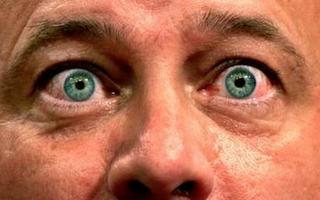Pretty much consumed my waking info-absorbing hours the last two weeks. I recommend the following links:
(a) Two excellent TNR articles. Noam Scheiber riffs on a NY Times article that tracked two families, one middle class and one poor, as they try to survive. The former landed on their feet, relying on "life skills" and connections that the couple accumulated through the years. The poor family was left behind. The article illustrates how impoverished folks who stayed didn't do so because they're morally bankrupt or lack intelligence per se, but mainly stems being born and stuck in a world where essential life skills, including something as seemingly basic as opening a bank account, were not needed, until you actually need 'em. It's the another dimension of poverty, that sociological estrangement from American society which middle class folk like me have a hard time understanding. The other is a wonkish attack on urban policymakers who think that edgy culture, haute cuisine, and nightlife are all that's needed to revitalize cities. I've happened upon this critique before, but having a real-life example makes it so much more powerful.
(b) Annoying as he sometimes can be, Andrew Sullivan might be the best blogger on the Katrina response, rightfully indignant and full of interesting e-mails from knowledgeable correspondents. Josh Marshall has been the top Republican corruption narc on net, and he's ever alert here, tracking what right now looks like a Karl Rove patronage operation that will be handing out $200 billion dollars to GOP cronies.
(c) This American Life, Episode 296 (9/9/05). Devastating. (Link is to RealPlayer file.)
(d) The most distressing news story of governmental malfeasance, even beating FEMA incompetence and cronyism? The police and sheriffs in white suburban Gretna, Louisiana, forming a line at the Mississippi River Bridge, firing their weapons in the air to prevent New Orleans evacuees from getting to safe, dry land. It's like something out of Cool Hand Luke. Billmon has more. Prepare to be outraged.
(d) Bush's failures: the NY Times op-ed page (R.I.P. NYT columnists); Dan Froomkin's White House Briefing; and the Daily Show, who came up with this killer Bush disaster checklist:

Dear God: Impeach Bush now before the coming yam shortage kills everyone on earth. Thank you.
2. John Roberts hearings.
Listening to the hearings off and on at work, and this dude is one smooth operator. Favorite exchange
 :
:
Senator Schumer: "It's as if I asked you what kind of movies you like. Tell me two or three good movies and you say, I like movies with good acting. I like movies with good directing. I like movies with good cinema photography. And I ask, no, give me an example of a good movie, you don't name one. I say, give me an example of a bad movies, you won't name one, and I ask you if you like Casablanca, and you respond by saying lots of people like Casablanca. You tell me it's widely settled that Casablanca is one of the great movies."
...Judge Roberts: "First, Doctor Zhivago, and North by Northwest."
(b) My thoughts on his confirmation pretty much align with this editorial.
(c) Wonkette's John Roberts-is-gay posts are a hoot. Tell me this doesn't trip your gaydar.
3. Recently seen films
(a) Everything Is Illuminated. The moving last couple of reels almost, but not quite, redeems this farrago of irritating quirks and derivative directorial gestures masquerading as an Eastern European road movie. Kind of a C-/B+ split. Or what he said.
(b) Proof: Miramaxed [mir'a-maksd]: adj. (1) a phenomenon by which a film, often a literary adapation, is compromised via pedestrian direction that underlines obvious themes, broad characterizations, a reduction of human complexity into easily digestible psychobabble, and above all, an unsuitable feel-good ending. (2) Any movie project that mandates at least three loving close-ups of Gwyneth Paltrow per minute.
(c) A Good Lawyer's Wife: These Korean movies might give this impression that Korean men are largely vapid, boozing, cheating wife-beaters. And that's not fai...uh, nevermind.
Moon So-ri confirms she's one of the bravest, greatest actresses currently working, even in this rather familiar film that lacks the emotional precision of Hong Sang-soo.
(d) Grizzly Man. Tell me Treadwell didn't trip your gaydar. And what he said.
(e) Three Outlaw Samurai (1964) & Goyokin (1969). There's something about the visual texture of b&w Tohoscope films from the 1960s that just slays me. Gosha's excellent Seven Samurai knockoff is no exception, a visual masterpiece of arresting compositions and exquisitely designed action. The soporific solemnity of his stylized color film Goyokin, however, left me literally conked out in my seat. Stephen Hunter differs, calling Goyokin Gosha's best work in perhaps the first American article featuring the neglected genre specialist.
4. Miscellaneous
(a) David Mamet on how learning poker can revive Democrats. Dave, bud, I wrote this piece ten months ago.
(b) Google new's Blogsearch engine (it powers the Blogger toolbar at the top of this page) sucks the hairy ass. As of now, it has only indexed posts dated June 2005 and thereafter. A search for any older postings will yield nothing. Dear Google: please leave your crappy search engine out of circulation until it's ready to go next time. Thanks.
